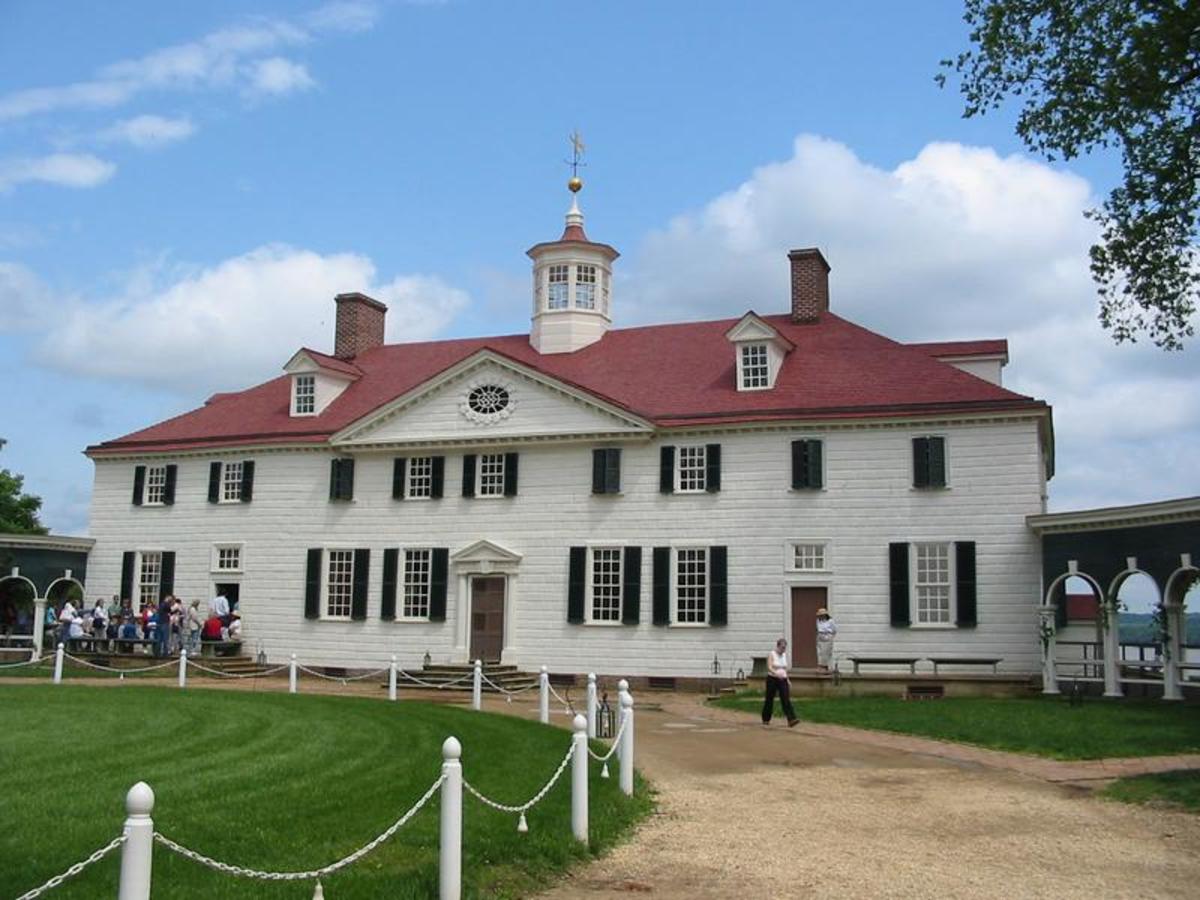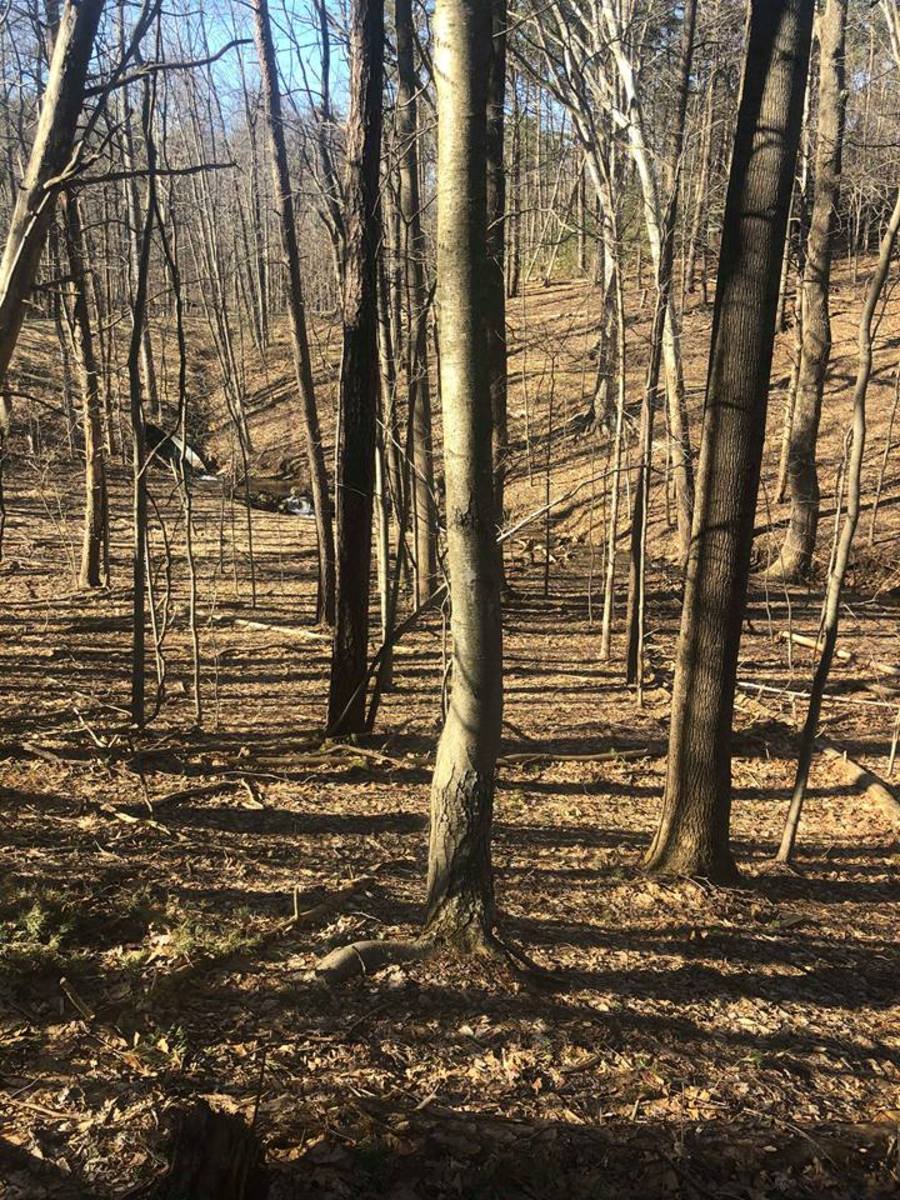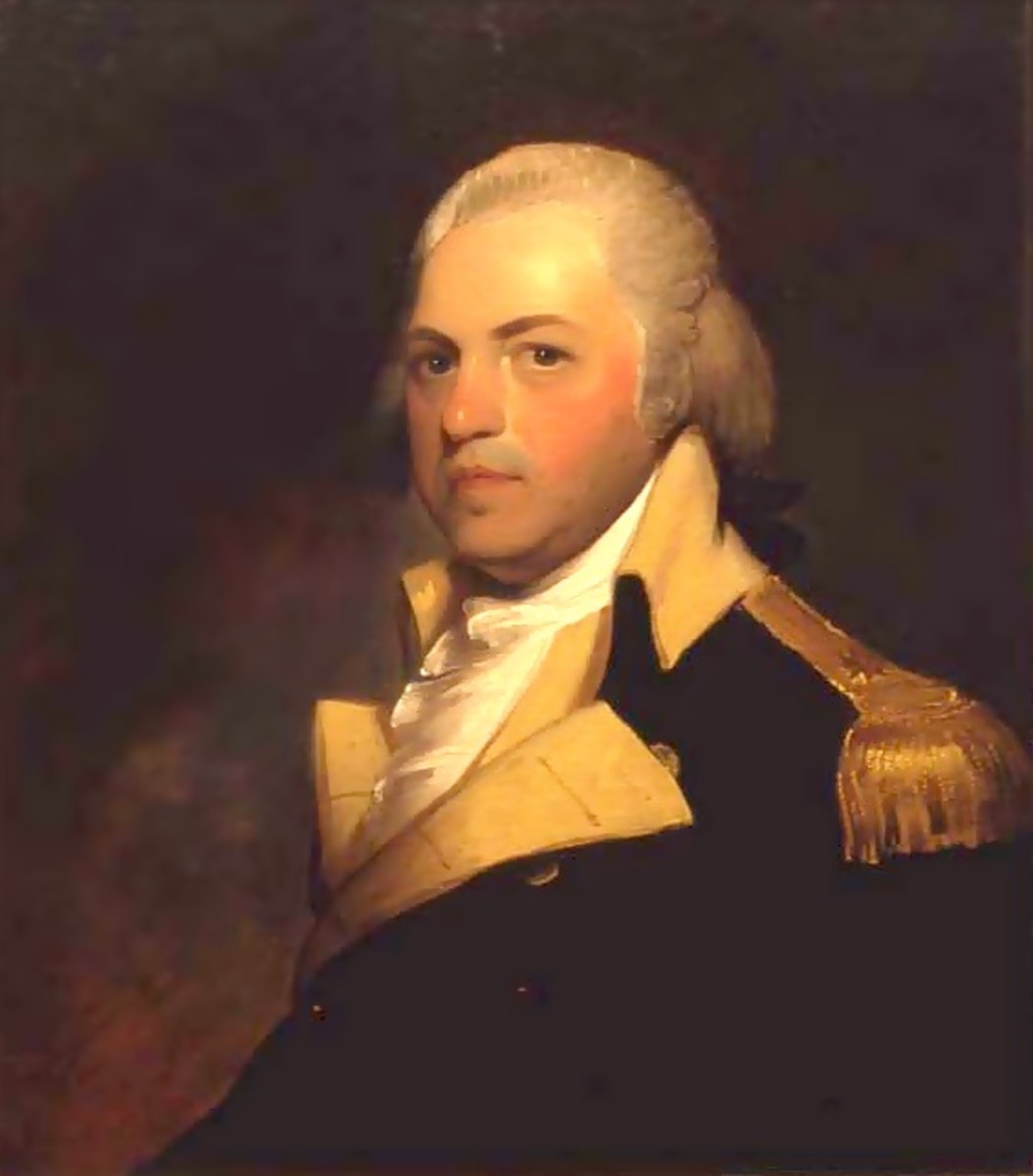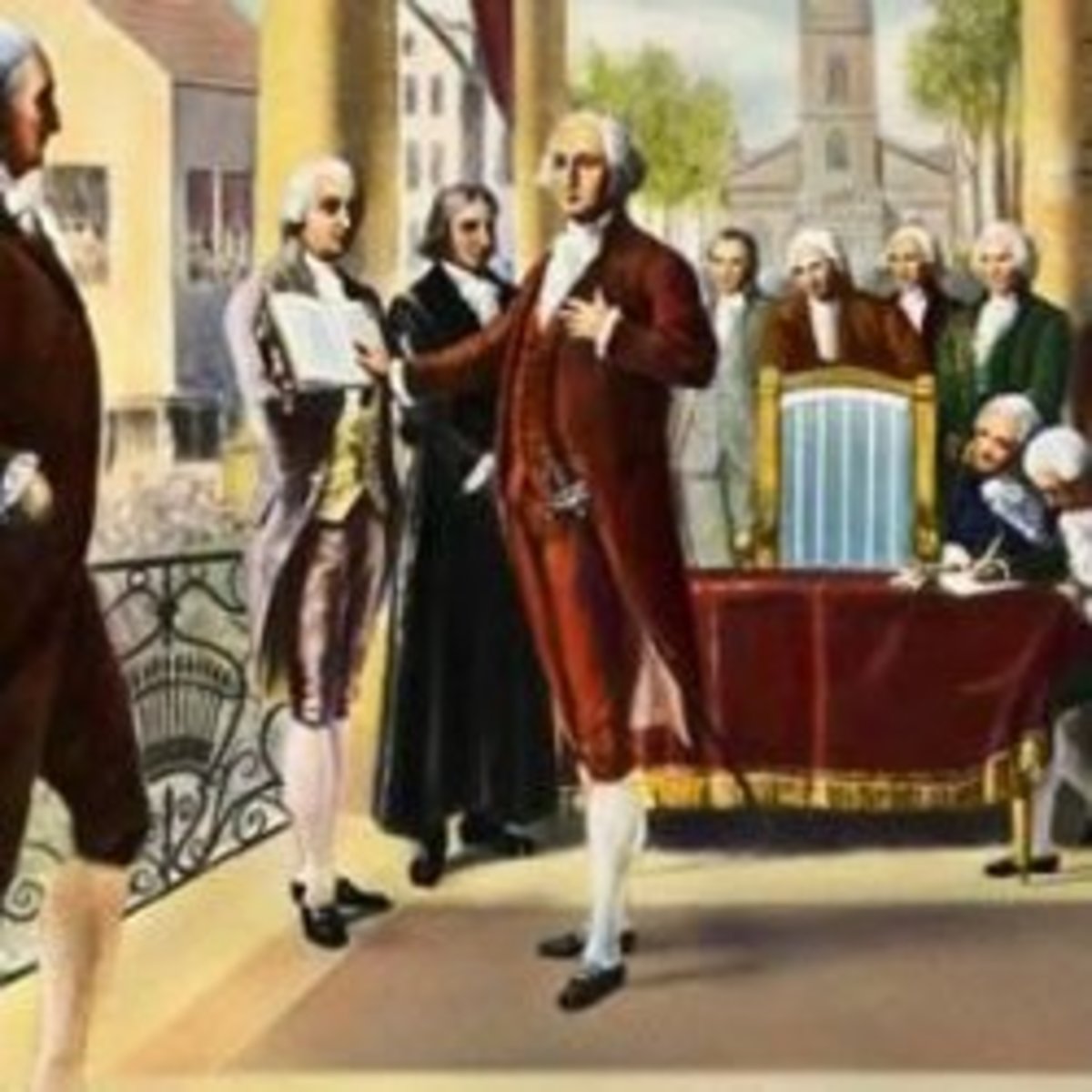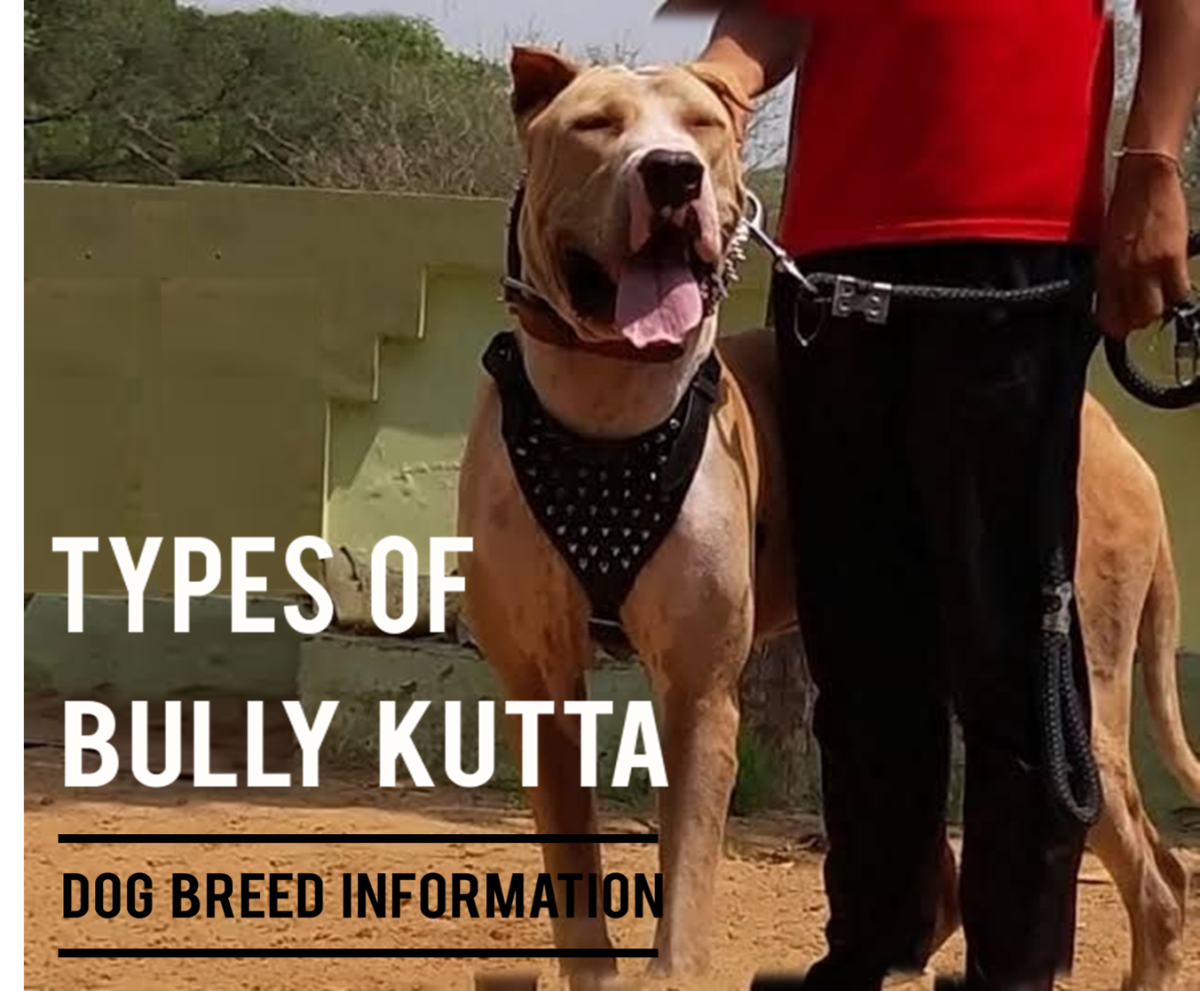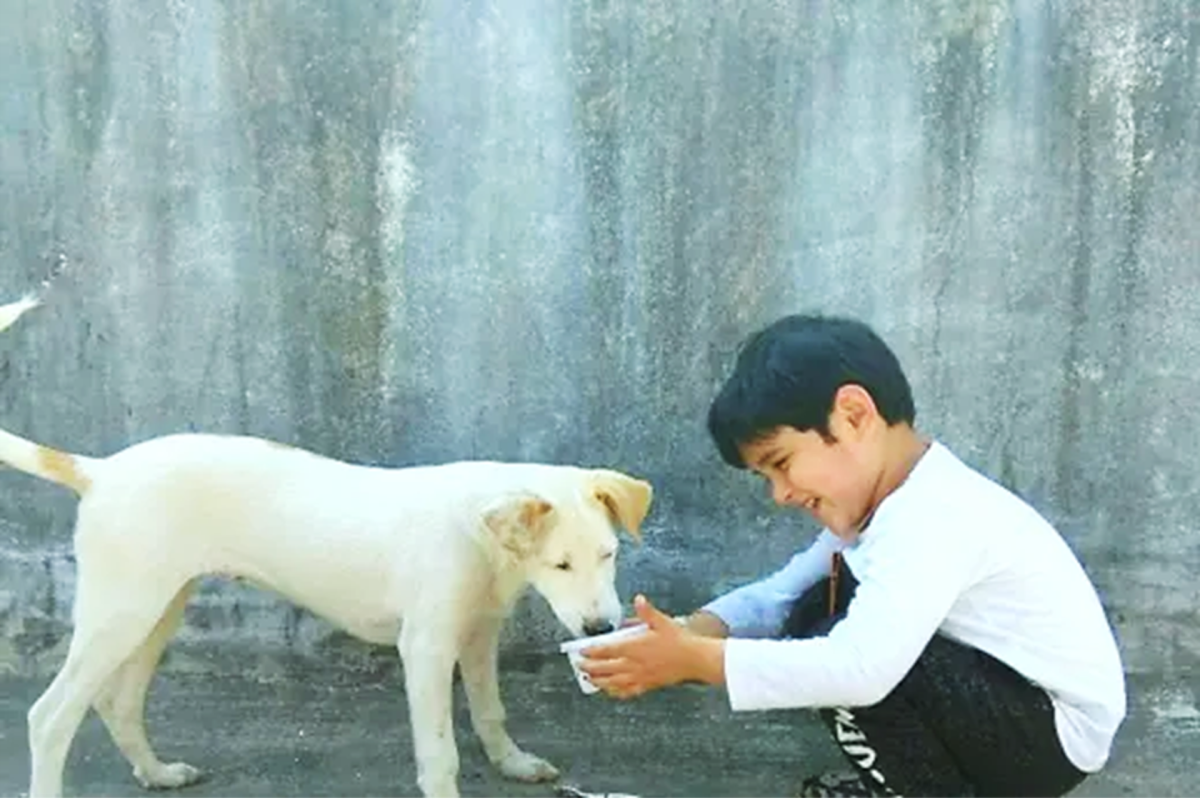Pawprints in History Part 3 - George Washington and His Dogs
George Washington and His Dogs
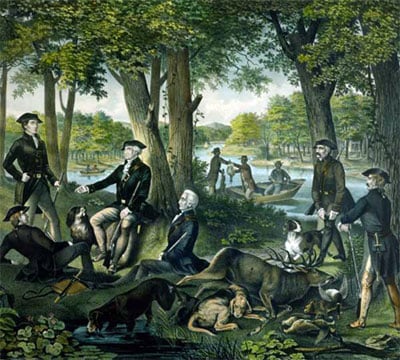
Washington Loved to Breed His Dogs
George Washington, the first President of the United States, General during the Revolutionary War, and an integral figure in the founding of our country was a very interesting figure in American history. He also had a love of animals and especially for raising, breeding and hunting with his dogs.
The father of our country, loved to fox hunt with his dogs, long before he became the first President of the United States. In the years he lived in Virginia, he loved to ride on his horse with his dogs to pursue foxes, sometimes several times a week. Washington built a pack of hound dogs he used for hunting.
As a hobby, he loved to breed his array of different dog breeds. Washington wrote in his diary about his dog breeding passion. He created a new breed of foxhound, that he called “Virginia Hounds”. Washington loved his dogs and named them Sweet Lips, True Love, Venus, Taster, Chloe, Tipsy, Searcher, Tipler, and Drunkard. In his diaries, he listed about 36 dogs that he owned and bred.
Names of George Washington's Dogs
Other names for his dogs were, Doxey, Dublin, Droner Hearkwell, Lady, Mopsey, Music, Pluto, Ragman, Ringwood, Rober, Rockwood, Rover, Searcher, Shingas,Mopsey, Jupiter, Pilot, Tartar, Trueman, Gurmer, Juno, Duchess, Countess, Ragman, Lady, Singer, Vulcan, Must, Forrester, Scentwell, Tiyal, Captain, and Madame Moose.
Stories About George Washington's Dogs
Madam Moose, Washington noted in his diary that she was quite frisky. Madam Moose was a Coach dog, which is known today as a Dalmation. In 1786, Washington paid 12 shillings for for the female, and because she was so frisky, he bought another Dalmation a year later for her.
Washington would write about his dog Vulcan, a French staghound. Vulcan was so big, a little boy would be able to ride him like a pony. Vulcan had a big appetite and powerful jaws, and loved Virginia hams. One of Washington’s favorite stories about Vulcan, is the time the dog quietly got into the kitchen and grabbed a whole ham. When he was spotted, the dog ran into the kennels with the cooked ham locked between his powerful jaws. While Martha Washington was not very pleased, George got a good laugh out of the event.
Washington kept his dogs in a kennel with a creek running through it and checked on his beloved dogs every morning and night. In 1792 the kennel caught fire and burned down.
Dogs and American History
When the first Continental Congress met in Philadelphia, Pennsylvania from September 5, to October 26, 1774, George Washington was invited to come as a representative of Virginia. .
Washington brought his dog, Sweet Lips for companionship. Together they went fox hunting at the Gloucester Hunting Club in New Jersey, where he met influential people who were members of the club. These men admired Washington’s foxhounds, and he gave some of his dogs to them. These men ended up helping Washington become commander of the Continental Army.
General Howe Gets His Dog Returned
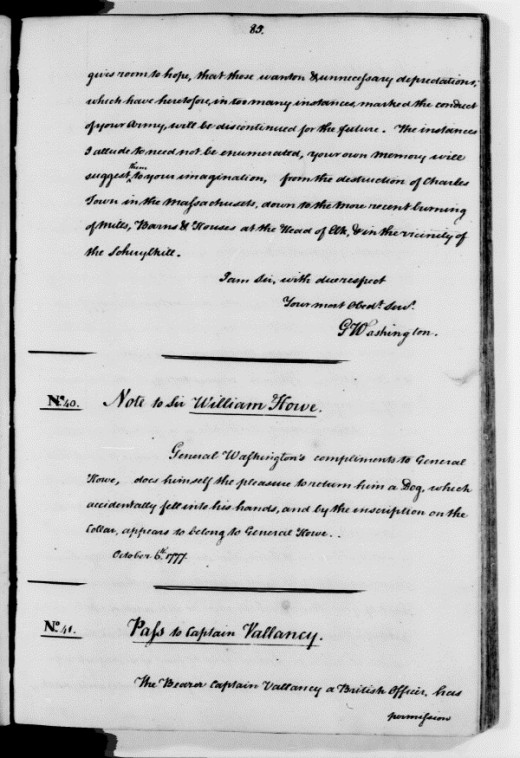
Returning an Enemy's Dog
Washington was an empathetic dog lover even during the Revolutionary War. During the Battle of Germantown, in October 1777, a small dog, thought to possibly be a terrier, although the breed was never officially known, was roaming on the battlefield between the American and British areas.
He found out from the dog’s tag that this dog belonged to General Howe and was lost and wandering around. Many of his officers thought Washington should keep the dog to weaken the morale of the British General.
But Washington instead, took the small dog to his tent and cared for him by feeding, brushing and cleaning him. Then he ordered a cease fire and an aide of Washington’s returned the dog to General Howe while there was a truce, with white flags waving.
The note was dictated by Washington and written by Alexander Hamilton and delivered by an aide. Washington tucked the note into the dog’s collar.
October 6. 1777 the note that was sent with the return of the dog. “General Washington's compliments to General Howe. He does himself the pleasure to return him a dog, which accidentally fell into his hands, and by the inscription on the Collar appears to belong to General Howe.”
No one will ever know for sure if the return of General Howe’s dog was a symbol of compassion from one dog lover to another, or a military strategic move on the part of Washington. In returning the dog, the aide was able to spy on the enemy camp and gain more knowledge about the British.
George Washington an Historic Figure
Washington and the French Staghounds
George Washington may have had wanted to do many things, and according to his papers at the Library of Congress, one of his desires was to breed “a superior dog, one that had speed, sense and brains.” His passion for foxhunting and love for his dogs became a big occupation for him.
After the war, Washington wanted to focus on breeding a foxhound that would be superior to the Virginia hounds he was breeding.
During the war, he had become friends with the French General, Marquis de La Fayette, who admired the King of France’s staghounds. La Fayette got seven French staghounds to Washington.
It was John Quincy Adams, the son of John Adams, who escorted the dogs from France to America to deliver them to George Washington. But Washington got angry at the younger Adams, when he abandoned the dogs at the port in New York. The dogs were missing for awhile. Finally they were found and shipped to his home in Mount Vernon, but it is not known if Adams was ever forgiven by Washington for his irresponsibility.
The French hounds were more aggressive than Washington expected. He bred his smaller Virginia hounds with the larger French hounds and successfully created a hunting dog that was swift and strong in the chase. He created the model of the American Foxhound we know today. As Washington got busy in politics, his friends at the Glouceser Foxhunting Club bred his new type foxhound with other English foxhounds too. The American Foxhound was recognized as a breed by The American Kennel Club in 1886.
Dog Breeds
Washington Had Many Breeds of Dogs
When Washington became President, his butler, Frank was taking care of George’s dogs he had left in Mount Vernon. Washington often wrote letters, making sure his dogs were well cared for. He was concerned that his female terrier was only bred with another terrier.
Washington owned Dalmations, (known as Coach Dogs), Terriers, a Newfoundland, a Standard Poodle named Pilot, (he referred to as a water dog), French Hounds, Foxhounds, Coonhounds, Virginia hounds, his newly created breed, The American Foxhound.
The Terriers were useful for keeping the rats off of the Mount Vernon farm. A slave named Tom Davis hunted ducks for Washington and would hunt with a Newfoundland named Gurmer. Although there is no historical documentation to back it up, the French Basset Hound may have come to America when Marquis de La Fayette gave Washington a French basset hound as a gift when he came to visit Washington.
Washington’s love for dogs was well known among many people. A prominent figure in Maryland politics named Richard Sprigg remember Washington had admired Sprigg’s spaniels in Annapolis. Sprigg sent Washington a female English Spaniel puppy who was well bred for retrieving birds on hunting expeditions.
American Foxhound
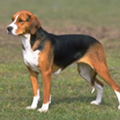
Washington and His Love of Animals
Washington owned an array of animals. He had a large stable of horses he loved and was an accomplished equestrian. Washington was given a donkey as a gift. He bred mules as a hobby too. His wife loved birds and had many including a parrot that used to laugh at Washington. But his love of dogs is most historic. The breed of American Foxhounds he created is part of his everlasting imprint on history.
Read More About Dogs in History
If you would like to read more about Dogs in History click:
Pawprints in Ancient History - Part 1 and Pawprints in History - Part 2




